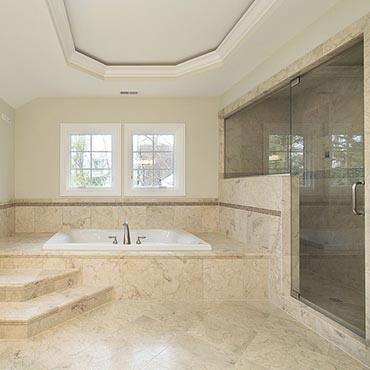It starts with a simple thought—“What if we finally redid the bathroom?” Before you know it, you’re scrolling through inspiration photos and imagining the perfect space: sleek tile, new fixtures, maybe even a walk-in shower. But before diving in, it’s important to plan strategically. A bathroom remodel can transform your daily routine and increase your home’s value—if it’s done right.
At Lone Star Floors, we’ve helped countless homeowners across The Woodlands, Katy, and Spring, TX bring their dream bathrooms to life. Whether you’re doing a simple refresh or a full renovation, here’s what to keep in mind as you begin the process.
Start With a Clear Vision
Before choosing tiles or paint colors, think about how you want your bathroom to function. Is it a busy family space that needs extra storage? Or a relaxing retreat you’ll use to unwind after a long day? Your goals will determine layout, materials, and even lighting.
Walk through your existing bathroom and take note of what works and what doesn’t. Maybe the vanity feels cramped, or there’s never enough counter space. These small observations will help your remodel truly improve how you use the space every day.
Plan a Realistic Budget
It’s easy to underestimate the cost of a bathroom remodel—especially when you start adding design features or high-end finishes. Establishing a realistic budget upfront helps you prioritize what matters most. Consider setting aside an additional 10–15% for unexpected expenses like plumbing updates or minor repairs.
At Lone Star Floors, we guide our clients through product selections that align with their budget while still achieving the look they love. From affordable tile options to custom showers, there are plenty of ways to create stunning results without overspending.
Choose Materials That Work Hard
Bathrooms are high-traffic, high-moisture spaces, so materials must be both beautiful and practical. Flooring, walls, and countertops should resist water, stains, and everyday wear.
Some of the most popular options include:
- Porcelain or ceramic tile: Durable, water-resistant, and available in countless colors and styles.
- Luxury vinyl tile (LVT): A stylish alternative that mimics wood or stone with added comfort underfoot.
- Quartz countertops: Non-porous, low-maintenance, and ideal for bathroom vanities.
For inspiration, explore our bathroom remodeling services to see the latest design and material options available for homes in the Greater Houston area.
Don’t Overlook Lighting and Ventilation
Lighting sets the mood in a bathroom just as much as it enhances functionality. Layered lighting—such as overhead fixtures, vanity sconces, and even accent lighting in a shower niche—can make your bathroom feel larger and more luxurious.
Ventilation is equally important. A proper exhaust fan prevents moisture buildup, protecting your new materials from mold and extending their lifespan.
Work With Experienced Professionals
While DIY projects can be fun for minor updates, a full bathroom remodel involves plumbing, electrical work, and structural considerations that require expertise. Partnering with experienced remodelers ensures your project runs smoothly from start to finish. Professional contractors not only handle installation but can also help with design choices, scheduling, and project management.
At Lone Star Floors, we combine decades of remodeling experience with local insight, helping homeowners in The Woodlands, Katy, and Spring create functional, elegant bathrooms built to last.
Ready to Begin Your Bathroom Remodel?
Planning ahead makes the difference between a stressful renovation and a rewarding transformation. By setting clear goals, choosing quality materials, and trusting professionals who care about your home, you’ll end up with a space that looks beautiful and functions perfectly for years to come.
If you’re ready to bring your bathroom vision to life, contact Lone Star Floors today. Our team is here to help you plan, design, and complete your project with craftsmanship and care.
Call us or visit our showroom to get started, serving The Woodlands, Katy, and Spring, TX with expertise and personalized service you can trust.





